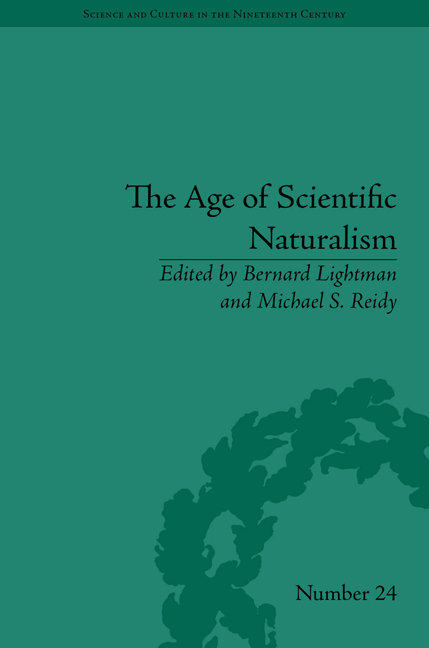Book contents
- Frontmatter
- CONTENTS
- Dedication
- Acknowledgements
- List of Contributors
- List of Figures
- Introduction: John Tyndall, Scientific Naturalism and Modes of Communication
- Part I John Tyndall
- Part II Scientific Naturalism
- Part III Communicating Science
- 8 Corresponding Naturalists
- 9 Tyndall and Stokes: Correspondence, Referee Reports and the Physical Sciences in Victorian Britain
- 10 Science at the Metaphysical Society: Defining Knowledge in the 1870s
- Notes
- Index
9 - Tyndall and Stokes: Correspondence, Referee Reports and the Physical Sciences in Victorian Britain
from Part III - Communicating Science
- Frontmatter
- CONTENTS
- Dedication
- Acknowledgements
- List of Contributors
- List of Figures
- Introduction: John Tyndall, Scientific Naturalism and Modes of Communication
- Part I John Tyndall
- Part II Scientific Naturalism
- Part III Communicating Science
- 8 Corresponding Naturalists
- 9 Tyndall and Stokes: Correspondence, Referee Reports and the Physical Sciences in Victorian Britain
- 10 Science at the Metaphysical Society: Defining Knowledge in the 1870s
- Notes
- Index
Summary
One foggy evening in Switzerland in September 1883, John Tyndall noticed an odd phenomenon. As he described it in a letter:
On opening the door a night or two ago to inspect the weather, I found the air filled with fog & drizzle. Behind me was a passage in which stood a bright lamp. On looking out into the darkness … [m]y shadow was projected darkly upon the fog, and round the shadow, at some distance, was a circle surprisingly bright and definite. The circle was thrown up or down, or shifted laterally, by changing the position of the lamp. It was extremely amusing to walk out into the fog and to find oneself accompanied, or rather preceded, by this saintly halo.
Tyndall tested the ‘halo’ phenomenon by bringing the lamp outside the door, replacing the lamp with a candle, and using a light in a room that he had filled with artificial fumes. He then put pen to paper and sent his observations to a friend he thought might be interested: George Gabriel Stokes.
We might be surprised to see Tyndall corresponding with Stokes in this informal and friendly manner. Although both were Irish-born physicists, in background, temperament, religious views and especially scientific affiliations, they had little in common.
- Type
- Chapter
- Information
- The Age of Scientific NaturalismTyndall and his Contemporaries, pp. 171 - 186Publisher: Pickering & ChattoFirst published in: 2014

